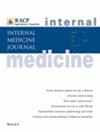Effect of positive airway pressure treatment on pulmonary artery pressure in obstructive sleep apnoea and/or obesity hypoventilation syndrome with pulmonary hypertension: a systematic review and meta-analysis
Abstract
Background
Patients with obstructive sleep apnoea (OSA) and/or obesity hypoventilation syndrome (OHS) are at increased risk of developing pulmonary hypertension (PH). The presence of PH is associated with a worse prognosis. The primary treatment for most patients with OSA/OHS is positive airway pressure (PAP). The aim of this study was to systematically review the effects of PAP therapy on pulmonary artery (PA) pressure in patients with OSA/OHS and PH.
Aims
Does PAP therapy improve pulmonary artery pressure in patients with OSA/OHS and PH?
Methods
Two independent investigators searched studies in MEDLINE, Embase and Cochrane Library. A systematic review and meta-analysis were conducted following Preferred Reporting Items for Systematic Reviews and Meta-Analyses guidelines. Inclusion criteria included studies involving adult OSA/OHS patients treated with CPAP/BPAP, with PA pressure ≥20 mmHg before treatment. Data synthesis utilised random-effects meta-analysis to estimate treatment effect.
Results
The search identified 1373 studies, with eight meeting inclusion criteria. Baseline characteristics of patients with PH were a mean age of 53 years, 86% male, a mean apnoea-hypopnea index (AHI) of 64 events/h and a mean BMI of 33 kg/m2. Meta-analysis revealed a reduction in PA pressure after PAP therapy (mean difference −8.62 mmHg, 95% CI: 4.01–13.22, P < 0.001). However, there was considerable between-study heterogeneity (I2 = 97.5%).
Conclusion
This study indicates that PAP therapy reduces PA pressure in patients with OSA/OHS, indicating potential benefits in managing PH. Further research is warranted to elucidate optimal PAP therapy protocols and long-term outcomes.

 求助内容:
求助内容: 应助结果提醒方式:
应助结果提醒方式:


